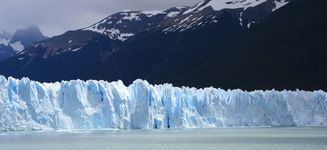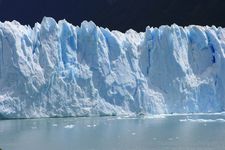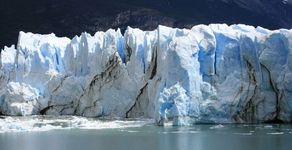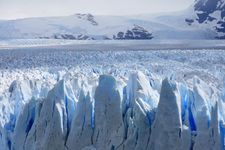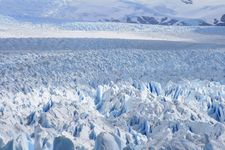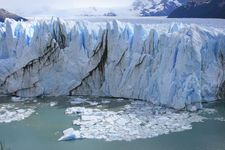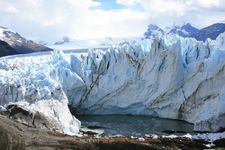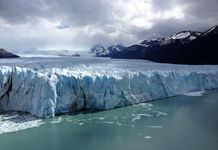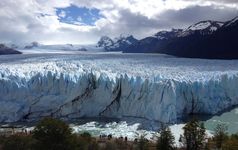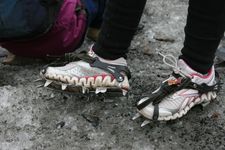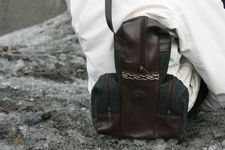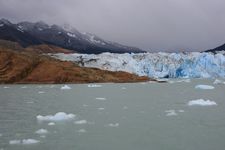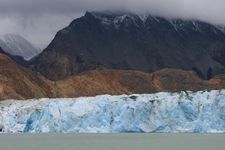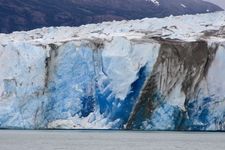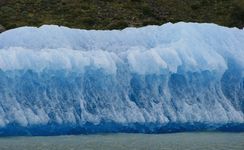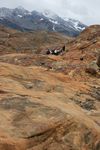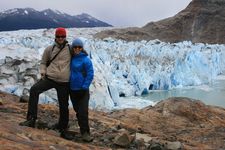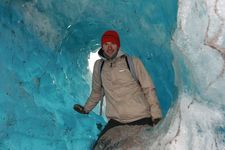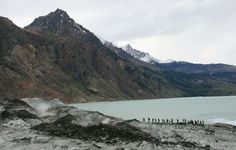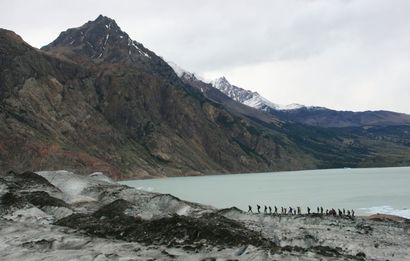
When you approach a glacier you feel as if you are travelling back in time. It’s almost as if you walked on ice on which the dinosaurs and mammoth had walked on million years ago. The impression is breathtaking!
We’ve seen two glaciers in Argentina. They were Perito Moreno and Viedma. The first one we’ve admired from the distance walking along its front and on the second one we’ve done trekking. Both are absolutely impressive pieces of art done by the nature itself.
During the trekking, which we’ve done with a group of experienced guides, we’ve learnt how a glacier is created. First there has to be a lot of snowfall. But really a lot! It takes at least ten years just to gather enough snow needed for starting the process of creating the ice. When there is enough of it (I assume it’s millions of tonnes altogether) the pressure created under the layers of snow reduces its dimension, crystallizes and changes into ice.
It is a simple physical reaction but it requires special circumstances to occur: a lot of snowfall (as mentioned before), not too much sun during the summer so that the snow doesn’t melt, a specific shape and surface of the ground so that the snow stays put, and time! A lot of time! The glaciers that we can admire today are thousands years old! Well, I’m aware that the scientists would add quite a few more requirements necessary for a creation of a glacier, but this should be enough to understand the process as such. Once the glacier is created it lives its own life. It grows, it melts, it brakes, it shapes the surrounding rocks and grounds by moving forward or regressing. We’ve learnt that the Viedma Glacier moves as fast as 1 meter a day in the center of its area and slower on the sides.
What I’ve found really great was that you can experience the glacier with all your five senses. You can see its beautiful colors: crystal, white, blue, emerald, gray, black and many more. You can admire the play of light-and-shadow among the different formations the ice creates. You can also hear the sounds that accompany a glacier all the time when it moves or brakes: cracks, thunders, roars and rumblings. This concert makes you feel as if a huge storm was coming.
When you are close enough you can touch the different formations of ice created on the glacier: a soft crushed ice, a smooth polished one, wet caves or rough gaps. Despite the fact that ice doesn’t seem to have a unique smell that man can acknowledge (I don’t know about animals) when you’re around you kind of smell it in the fresh and cold air surrounding you. And finally the taste. Clean ice did not have any distinctive taste for me, but when I added the coffee liquor that we received from the guides at the end of trekking for “warming-up” I found it delicious!
